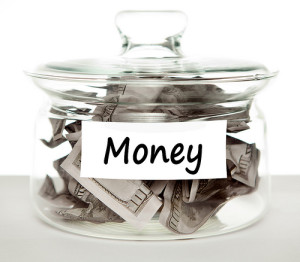Yesterday’s budget homework was to go through your financial statements looking at your sources of income. Knowing this will help you with today’s project. Keep your financial information handy because you may need to pull it out today! I will once again be using many of Dave Ramsey’s suggestions on budgeting because I have found them so beneficial in the past and because they are easy to follow.
Today, our assignment is to figure out how much money you will need to cover your housing, food, clothing, and transportation expenses. Dave Ramsey classifies these as your four walls. Please print out Dave’s Monthly Cash Flow Plan form because we will begin to fill it in today! Whether you have regular income or irregular income, this form is going to be the beginning of our budget!
Let’s start with housing expenses first. (If you aren’t sure what all qualifies as a housing expense look at Dave’s Monthly Cash Flow Plan and it will give you the subtopics of first mortgage/rent, second mortgage, real estate taxes, repairs and maintenance, and associate dues.
Most of you will know how much you pay for rent or your mortgage each month. However many of you may have not budgeted for repairs or maintenance in the past. It is crucial to do so, especially if you own your home. Furnaces break, the roof will need replaced at some point, appliances wear out, windows get broken, etc. If you aren’t sure what you pay for these things, look through your financial information for transactions of your paid mortgage/rent checks (or automatic withdrawls) and possibly some housing repair expenses such as Menards, Lowes, or other repair stores. After you have a number for your first mortgage/rent, second mortgage, real estate taxes, repairs and maintenance, and associate dues write those numbers on the Monthly Cash Flow Plan.
Once that is done, keep the Monthly Cash Flow handy and let’s move to the food category. This includes groceries and eating out. In most circumstances, eating out is not a necessity and could be a variable expense (one that could be cut if necessary. We will look at that later!) However, I know some of you have jobs where it isn’t possible to take your lunch with you everyday. Please remember to be as accurate as possible when going through your financial papers. If you spend $600 on eating out, for now you need to put that down. Later we may work on cutting that number down, but that’s for a different day. As with the housing category, after you have a number for your groceries and eating out write those numbers on the Monthly Cash Flow Plan.
After groceries, let’s move to clothing. If you work outside the home, you have to have clothes for work. Whether it is uniforms or you wear what you want, you should be budgeting an amount for clothing because at some point you will need more. I know when I was working I need fancier clothes than what I wear now. You also need to account for children’s clothes if you have kids and an amount for your own personal clothing. Don’t forget dry cleaning or special laundry arrangements if you need them for your clothing. Once again, use the most realistic number you can find with your financial statements. The more realistic numbers you use in making this budget, the more realistic your budget will be! There are ways to cut costs in this category but that is something we will also address later on in this series. Once again, fill in your numbers on the Monthly Cash Flow and we will move to the last category for today.
Finally, we need to go through the transportation category. Dave lists gas and oil, repairs and tires, licenses and taxes, car replacement, and a miscellaneous category. It is important to have a car replacement category because all cars eventually give out. Even if you set a very small amount into this category, you will need to replace your vehicle at some point and Dave highly recommends paying for your vehicles with cash (and so do I!) Once again go through your financial records, find how often you put gas in your cars, what you pay for oil changes, and what you paid to license your car last year (remember to divide that by 12 so you have the monthly amount needed). Record these numbers on your Monthly Cash Flow Plan and you are done for today!
I’m trying to keep this budget to a few steps each day so you will be encouraged to keep working on it and not be overwhelmed. I really hope you consider making your own budget. It won’t be perfect the first time, and even when you use one for a long time, surprises creep up that we forget about or circumstances change. That’s ok! Don’t let it discourage you from reaching your goals with a small setback. Make adjustments and keep going!
In case you missed the previous days in the challenge, here they are:




Leave a Reply